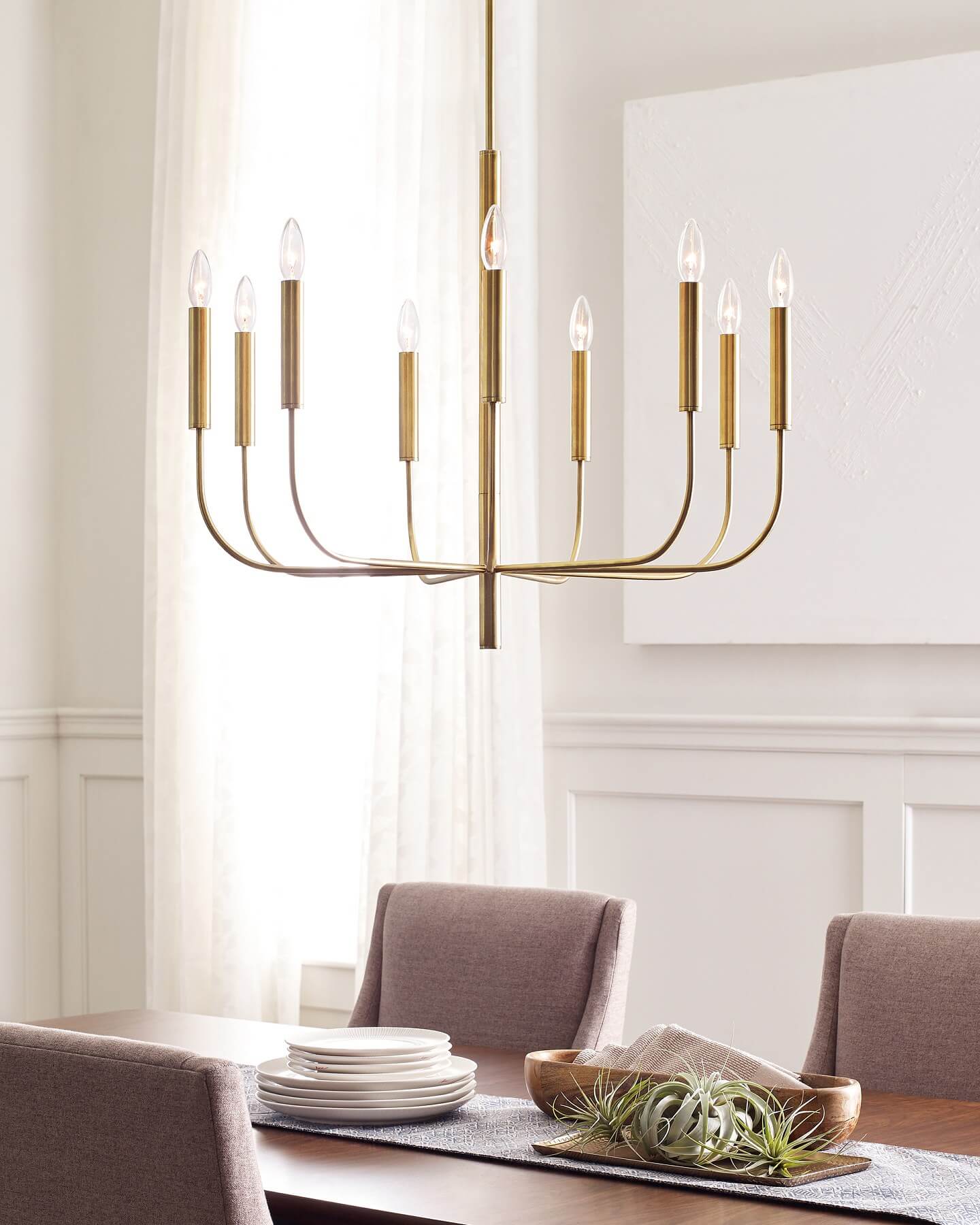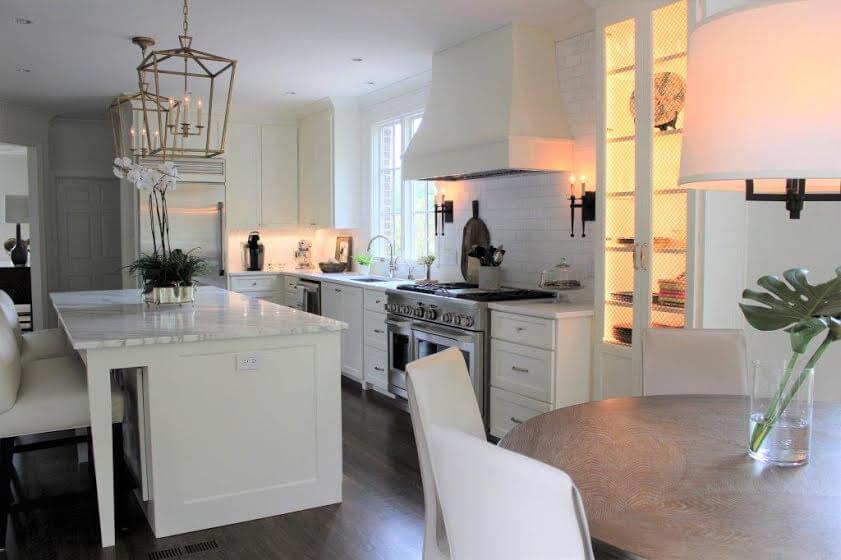sponsored content
Did you know that, quite often, interior designers have a trusted lighting specialist (LS) they turn to when creating next-level interiors? At least, the good ones do, and it’s because lighting design is a highly specialized profession in which the specialists are taught to marry science and art, to think through the functional intricacies of a home to create light in scenarios that are beautiful during both day and night — evoking a sense of cozy togetherness, calming serenity or airy openness.
So when it comes to the selection and placement of lighting fixtures and lamps, the technical and artistic expertise of a lighting specialist is crucial. Having that expert guidance on your home design project can help you avoid common pitfalls and make a world of difference in the resulting ambiance — and functionality — of your interiors. We talk to the lighting specialists at Mayer Lighting to find out the most common mistakes in home lighting and offer solutions to avoid them.
1. Know your space’s dimensions.
Knowing the dimensions of your space and ceiling height is imperative. “It’s the MOST important part when it comes to shopping for a fixture,” says Michael Fortson, LS. A medium-sized chandelier will be dwarfed by a cavernous great room, for example; while a massive wrought-iron candle chandelier will look crowded and silly in a small space. Adds Michael, “Without knowing these details, it is virtually impossible to make a recommendation on the fixture size. Most of the time we add the length and width of the space to have a good starting width for a chandelier.”


2. Plan ahead for lighting.
“Lighting is the jewelry of your home,” says Lauren Kassouf, LS. And just as most people choose their jewelry last before they walk out the door, most people also choose their lighting last — a common but unfortunate faux pas. “Plan ahead for lighting! You usually select lighting last when you have blown your budget,” says Lauren. “Start selecting early. That way, the ‘jewelry’ of your home can really shine.”
3. Mix light-fixture finishes.
“Do not be afraid to mix finishes throughout your home,” says Elene Weaver, LS. “There is no rule that states every finish must match throughout your home.” So, if you have more than one fixture in a space, you don’t have to use the same finish. If you have polished nickel pulls in the kitchen, you can mix it up and make a statement with an unexpected brass-finished light with a completely different look. Have fun and let your personal style shine through with light fixtures — they’re often the most eye-catching hardware in the room.

4. Do not be afraid of LED lighting.
Remember when LED lights first came out and they looked like the vintage buzzing blue-lighted bug zappers from the ’80s? Times have changed. “The blue Christmas lights from years ago is a thing of the past in LED technology,” says LS, Ashley Lawrence. “Color temperature and color-rendering index measure quality in an LED light, which is important to understand, because color temperature varies between brands. And the cheaper the LED, the less dependable the light quality.”
Quality is everything when it comes to LED lights, and not just in bulbs but in integrated recessed lighting as well. Understanding these nuances and how LED color temperatures and “color-rendering indexes” interplay in a space is crucial. “Do not let someone else select LED lights for you. You do not want to have an extremely white kitchen that feels like an operating room,” says Ashley, who lets us in on an insider tip, saying, “Most of the time, the best color temperature selection is 3,000 Kelvin with a CRI of 80 or higher.”
5. Go for fixtures with LED integration.
When given a choice, always opt for fixtures with LED integration. Fixtures with LED integration, or fixtures with built-in LED bulbs, usually operate the LED much more efficiently and last much longer than those with an added LED bulb.

6. Placement of recessed lighting is crucial.
“Recessed lighting placement is VERY important, especially in kitchens and bathrooms,” says LS, Amber Lyle. “Do not let this aspect of the building process go untouched.” Mayer Lighting offers a service where they will walk through the house with you and the electrician to determine the optimal placement of your lighting system, then they’ll draw the electrical layout into the existing architectural and design plans. Trained lighting specialists think through the functional aspects of your everyday living. “You want to make sure you do not have shadows when you’re putting on your makeup, and you want to have ample light when cutting vegetables in the kitchen,” adds Amber.

7. You can never go wrong with dimmers.
Lighting Specialist, Evelyn O’Leary cuts to the chase when it comes to her feelings on dimmers, saying, “Dimmers are necessary in ALL spaces. When given the choice, always use a dimmer.” Which brings us to number eight, where dimmers becomes even more dynamic …
8. Move into the future with fully integrated smart-home lighting.
Imagine being able to activate, with your voice, a “homework” setting for your lights to shine at their brightest capacity, then as it nears bedtime, asking the lights to dim down to a calming illumination. Or perhaps you’ve gone on vacation, so you integrate your home lighting with your home security controls. The smart home is becoming more and more common, and its ubiquity is inevitable. “At Mayer, we have a display in our back kitchen with Lutron’s Radio RA dimming system, which allows you to play around with it and better understand smart-home controls,” adds LS, Jennifer Caldwell.
“In addition to offering a service to customize the layout of your electrical design, if you start early enough, Mayer can also custom-design your entire home lighting with smart controls,” adds Jennifer. “Smart-home lighting is a big deal to us. We actually go out in the field to oversee installation and program the systems with the electrician.”
The earlier in the process that clients reach out to Mayer for lighting expertise — and especially smart-home lighting design — the more customized and comprehensive the designers can be. So, if you’re building or renovating, reach out now!
To learn more about Mayer Lighting, visit them online at mayerlighting.com.
This article is sponsored by Mayer Lighting.



















